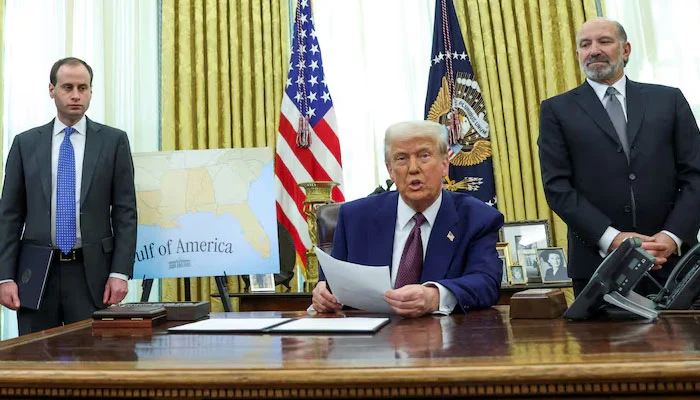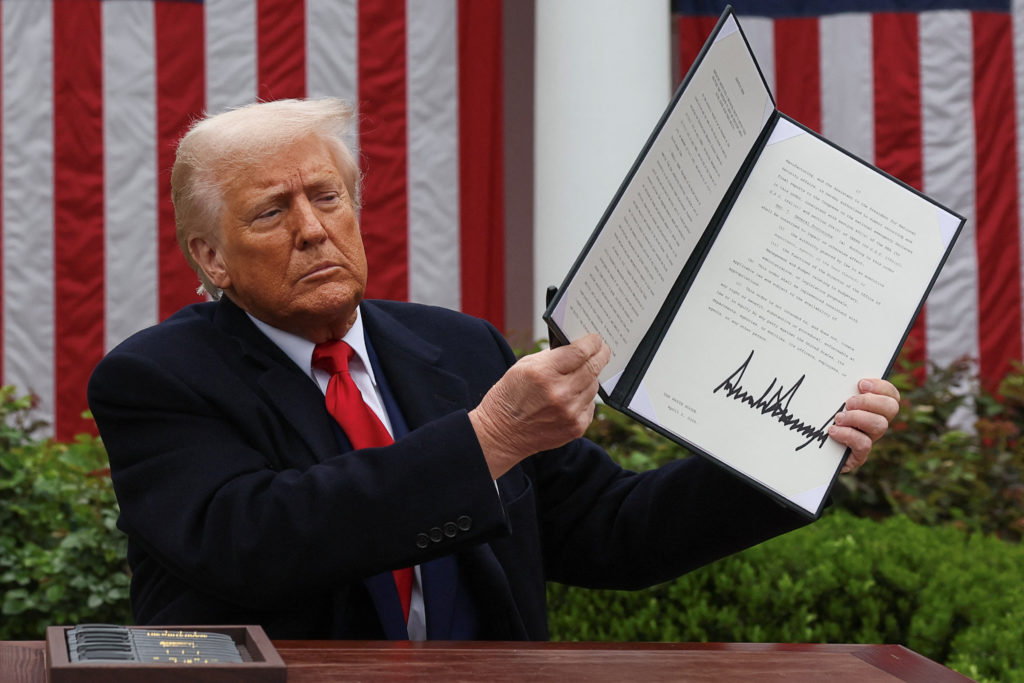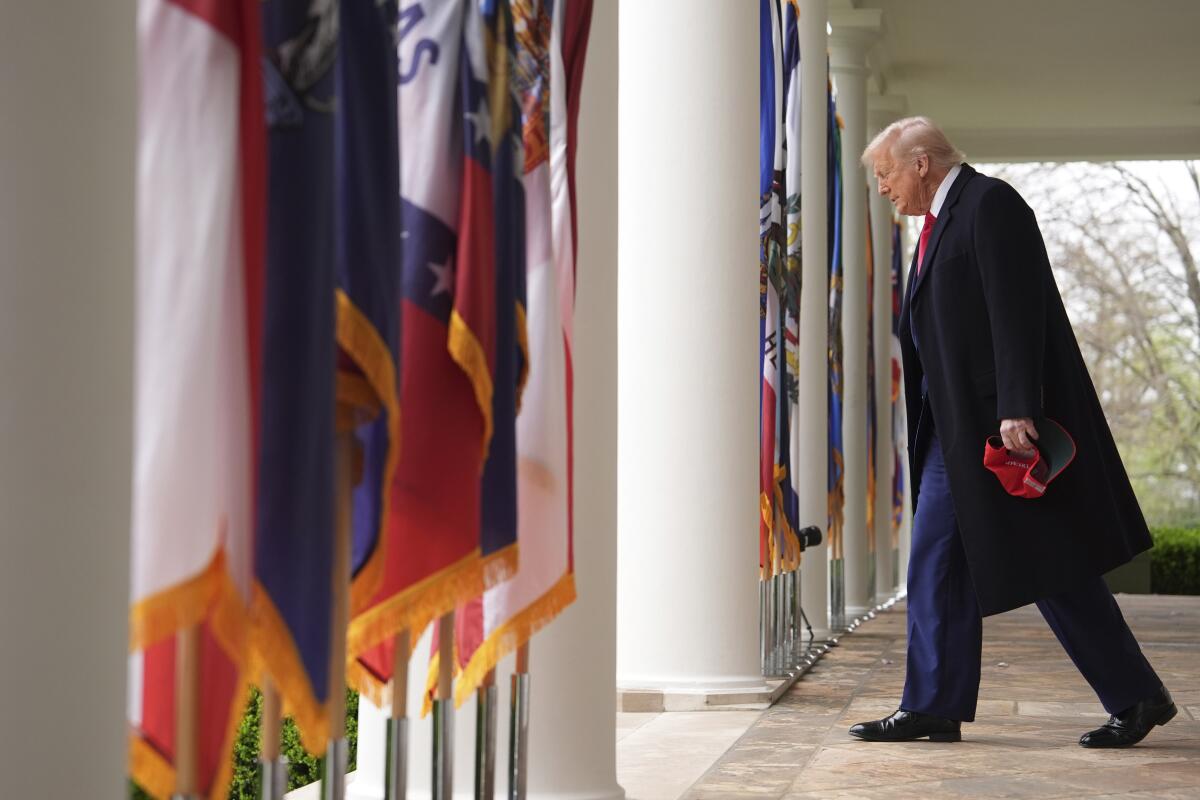WASHINGTON, D.C. – In a bold move set to reshape the global trade landscape, President Donald Trump on Wednesday laid out sweeping new tariffs on imports to the U.S., marking the day as “Liberation Day”, a cornerstone in his pledge to restore the American dream.
Unveiled at the White House Rose Garden during a “Make America Wealthy Again” event, the new duties aim to level the global playing field. With an air of defiance and a promise of prosperity, Trump declared these tariffs would revive domestic manufacturing and usher in a new era for American workers.
“For nations that treat us badly, we will calculate the combined rate of all their tariffs, nonmonetary barriers and other forms of cheating,” Trump said Wednesday.
“And because we are being very kind, we will charge them approximately half of what they are and have been charging us,” he said. “So, the tariffs will be not a full reciprocal. I could have done that. Yes. But it would have been tough for a lot of countries.”
What’s in the Tariff Plan?

Commerce Secretary Howard Lutnick stood beside Trump, chart in hand, as the president revealed a baseline 10% duty on all U.S. imports, effective Saturday. For countries imposing steeper duties on American exports, customized tariff rates will take effect on April 9.
Previously, the administration had slapped tariffs as high as 25% on imported auto vehicles and certain goods from Mexico, Canada, and China. While tariffs on Canada and Mexico remain unchanged, new duties on China will stack atop existing ones.
Here’s the breakdown of the new tariff rates announced as part of “Liberation Day”:
- China: 34% (in addition to existing 20%)
- Vietnam: 46%
- Cambodia: 49%
- India: 26%
- South Korea: 25%
- Japan: 24%
- Thailand: 36%
- Taiwan: 32%
- Indonesia: 32%
- Malaysia: 24%
- Switzerland: 31%
- South Africa: 30%
- Bangladesh: 37%
- Sri Lanka: 44%
- Pakistan: 29%
- Israel & Philippines: 17% each
- United Kingdom, Brazil, Chile, Australia, Singapore, Turkey: 10% each
The administration defended the tariffs with a chart showing that other countries often impose much higher rates on U.S. goods. For instance, while Japan charges 46%, the U.S. will only apply a 24% duty.
Why Trump Believes Tariffs Are Necessary

For Trump and his economic advisers, tariffs are more than just numbers, they’re tools to reclaim America’s industrial strength. Citing a ballooning $1.2 trillion trade deficit in 2024, Trump painted the U.S. as a victim of decades-long exploitation by foreign powers.
“For decades, our country has been looted, pillaged, raped and plundered by nations near and far, both friend and foe alike,” Trump said Wednesday.
The administration argues that tariffs, collected during customs clearance, will reduce reliance on foreign goods and strengthen domestic industries.
Targeted products range widely, from China-made iPhones to European wines — and the ripple effects are expected to hit many sectors of the American economy.
Rising Opposition at Home and Abroad
Despite the patriotic tone of the announcement, not everyone is onboard. Lawmakers on both sides of the aisle raised alarms over possible consumer price hikes.
On Wednesday evening, the Senate passed a resolution, 51–48, aiming to undo Trump’s emergency fentanyl trafficking declaration that justified tariffs on Canada. Notably, four Republicans crossed party lines in support, though the measure faces grim prospects in the GOP-led House.
International allies have also responded with frustration.
“In our judgment, it will be negative on the U.S. economy that will have an impact on us,” Canadian Prime Minister Mark Carney told reporters Wednesday.
Australian Prime Minister Anthony Albanese characterized the Trump administration’s new duties as “not the act of a friend” during a press conference Thursday.
A Warning Against Retaliation

The White House remains steadfast. Secretary of the Treasury Scott Bessent, issued a stern warning to global partners considering revenge tariffs.
“My advice to every country right now: Do not retaliate,” Bessent said in an interview. “If you retaliate, there will be escalation.”
Trump’s “Liberation Day” tariff push could define not only his 2025 trade legacy but also the future of American manufacturing and its standing in the global economy. With sharp divides at home and abroad, the coming months will test whether these tariffs empower or isolate the U.S. on the world stage.



